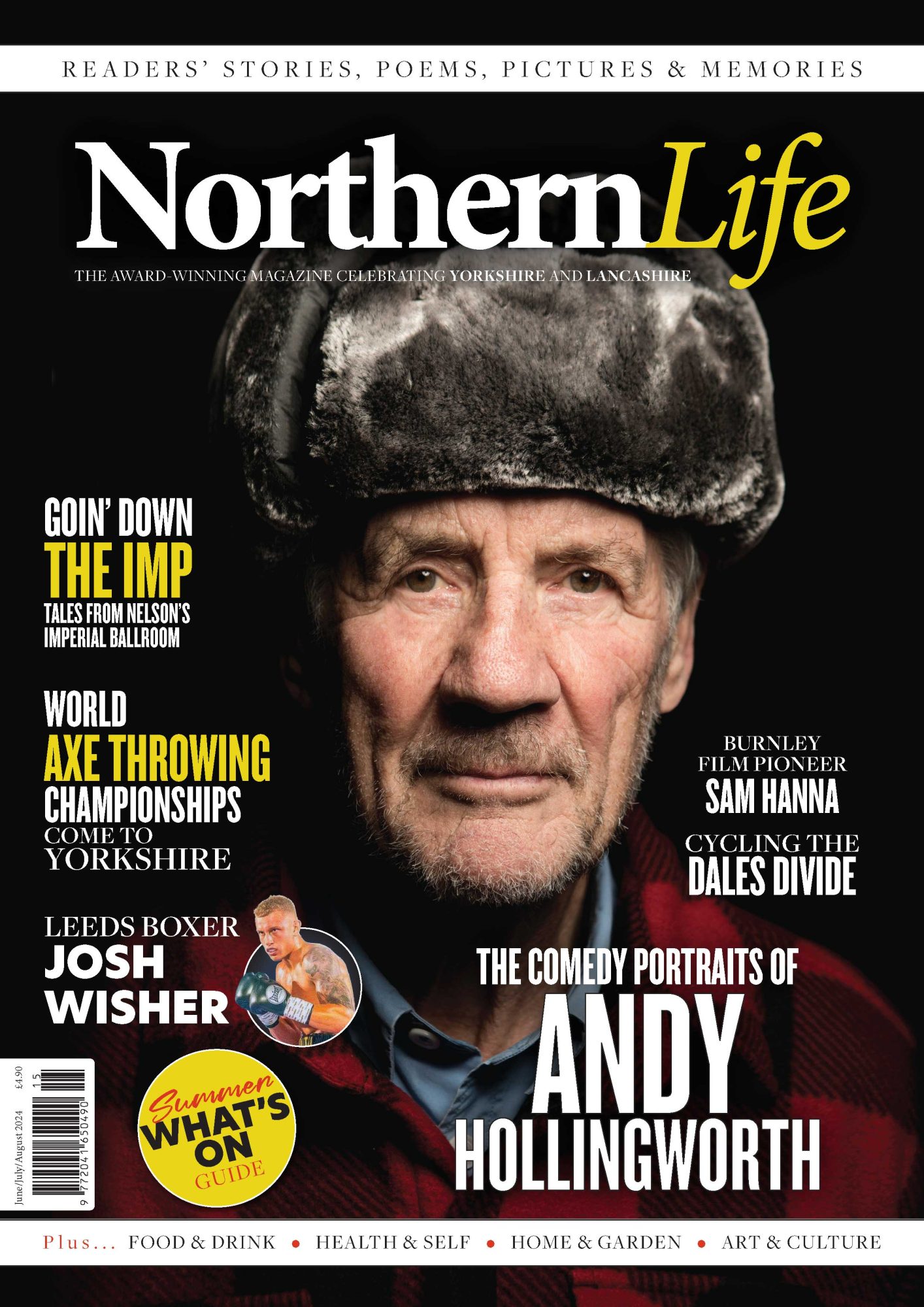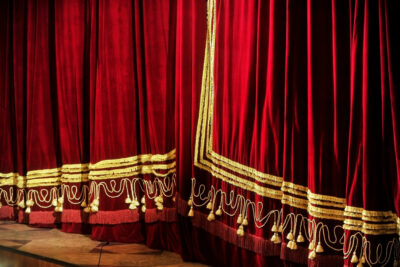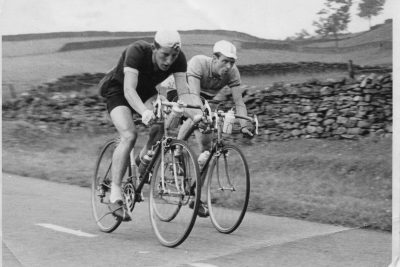
Paul Town – The Man Who Paints Football Grounds
by Andrew Liddle
Andrew Liddle meets an artist with a difference in Bradford - the 2025 City of Culture.
Bradford artist Paul Town portrays football grounds in England and Scotland, in each case evoking their unique spirit, often at a moment of high drama. His oil paintings, available as original commissions or sold as prints, are extremely popular not just with a global audience of football fans but as works of art admired and displayed by a wide range of people.
Most feature grounds illuminated against the night, often under dramatically colourful skies. “The floodlights have got to be on,” he says jovially. “That’s when everything is at its most exciting, and for me, the atmosphere they portray brings back so many memories of watching football as a child.”
That sense of excitement and passion, hope and expectation shines out of all his paintings.
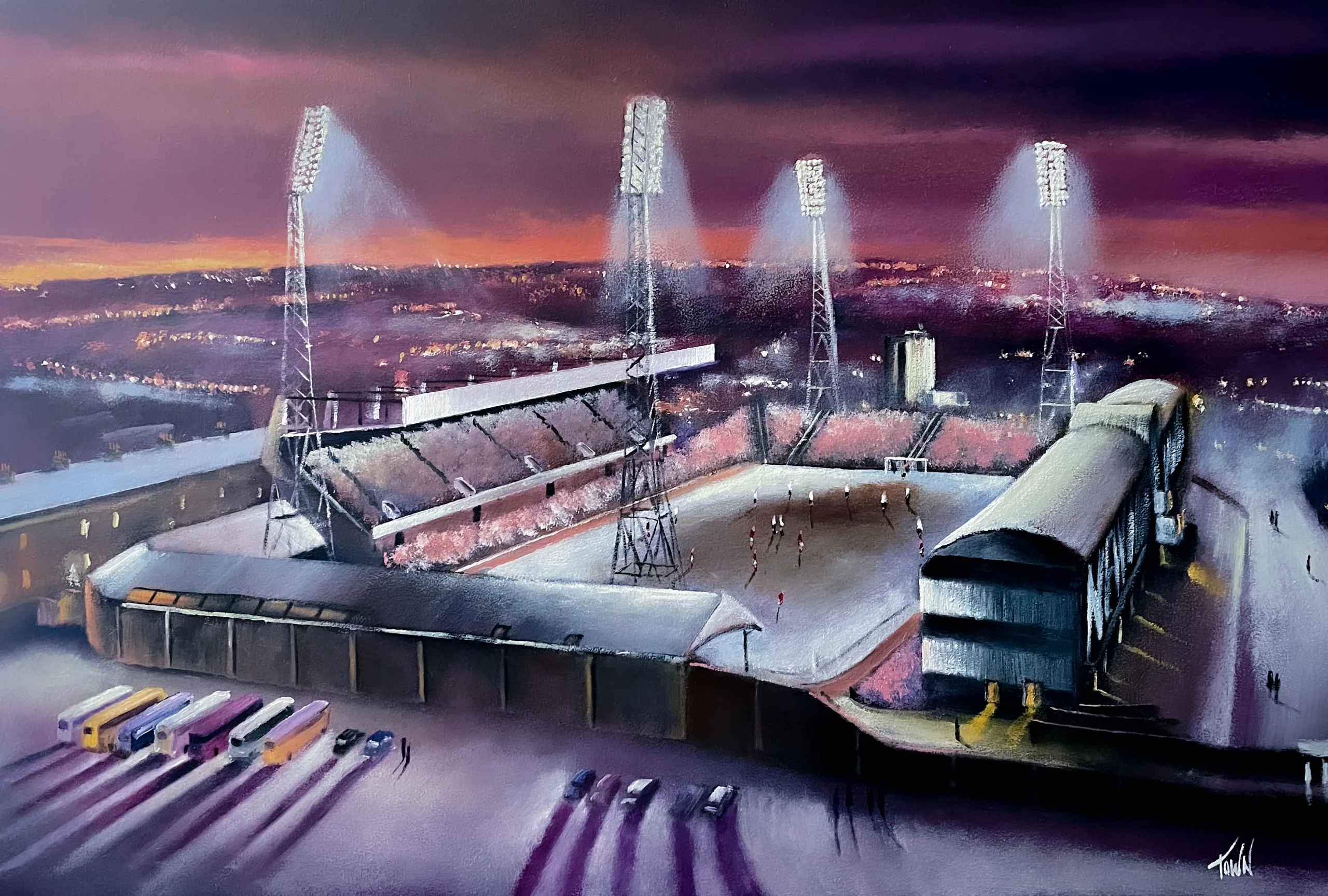
St James Park – Newcastle United
Part of their appeal is that he often nostalgically celebrates the last days of an old order of football. The old grounds, many pre-Great War, might now seem drab compared with modern all-seater stadia, but they come magically alive under the floodlights, transformed into glittering fields of dreams in his vision.
That sense of excitement and passion, hope and expectation shines out of all his paintings.
Paul vividly remembers the moment, as a boy of four, from the top deck of a bus, he first saw them casting a shimmering halo around Bradford’s other football (and cricket) ground, the beautiful old Park Avenue – now, sadly, a wilderness. The fascination remained with him; by the time he was ten, it had developed into a firm conviction that he would someday become an artist – and paint football grounds!
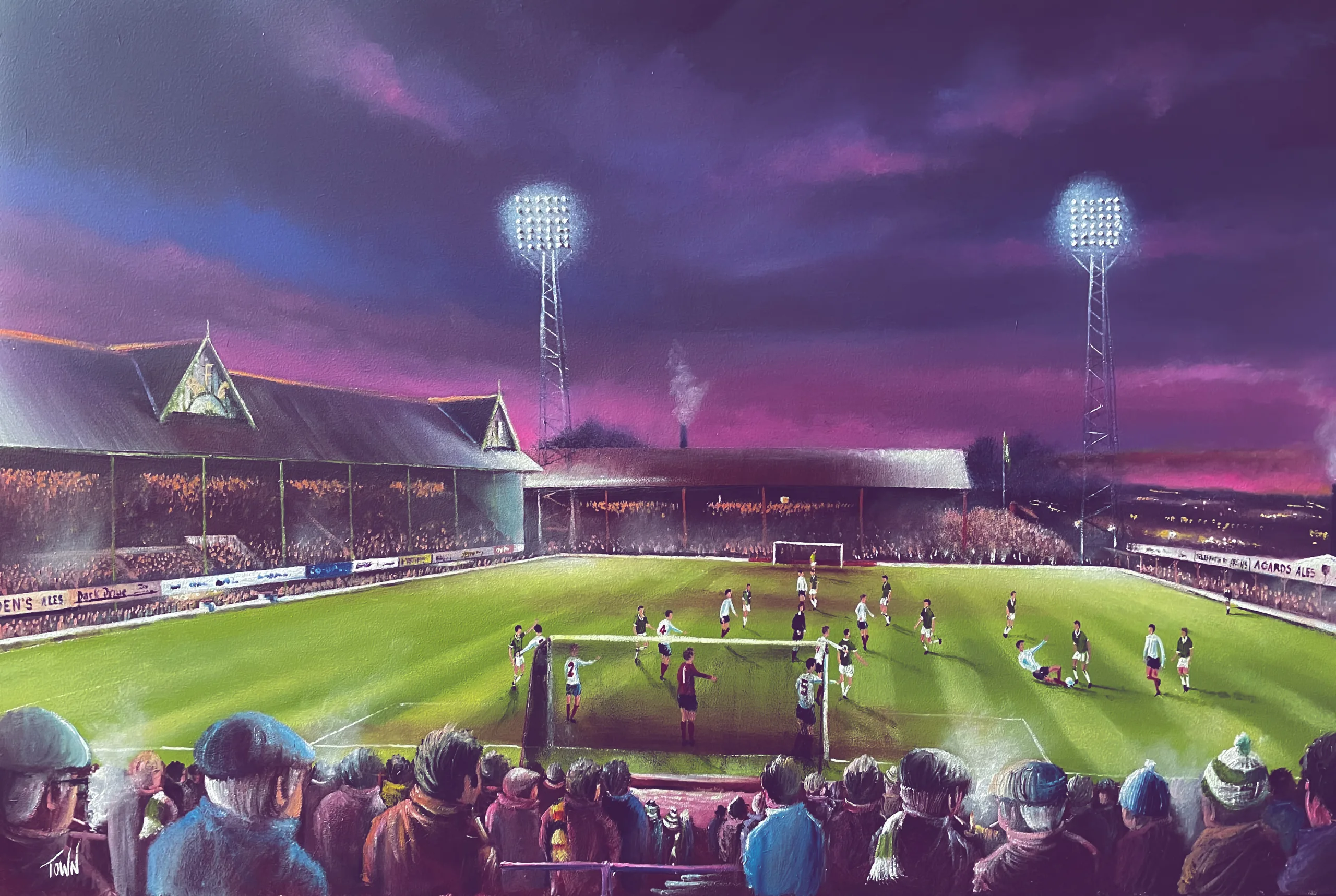
Bradford Park Avenue
Paul has since been commissioned many times to paint Park Avenue, the club his grandfather supported. His dad, Barry, once scored there in a trial match. “It’s my favourite ground of all time,” he says with a gleam in his eyes. “It was unique in every aspect of design and colour.”
Paul has since been commissioned many times to paint Park Avenue, the club his grandfather supported.
Its impressive three-gabled stand is typical of the work of the Scottish architect Archibald Leitch, who designed many grounds that became household names. The cherry red and white ‘doll’s house’ changing room is quaintly reminiscent of Fulham’s Craven Cottage by the same designer.
A devout student of Simon Inglis’s book, Football Grounds of England Wales, Paul will tell you in loving detail about every one of them, many now demolished in whole or part, including Aston Villa’s Trinity Road Stand, often considered Leitch’s masterpiece.
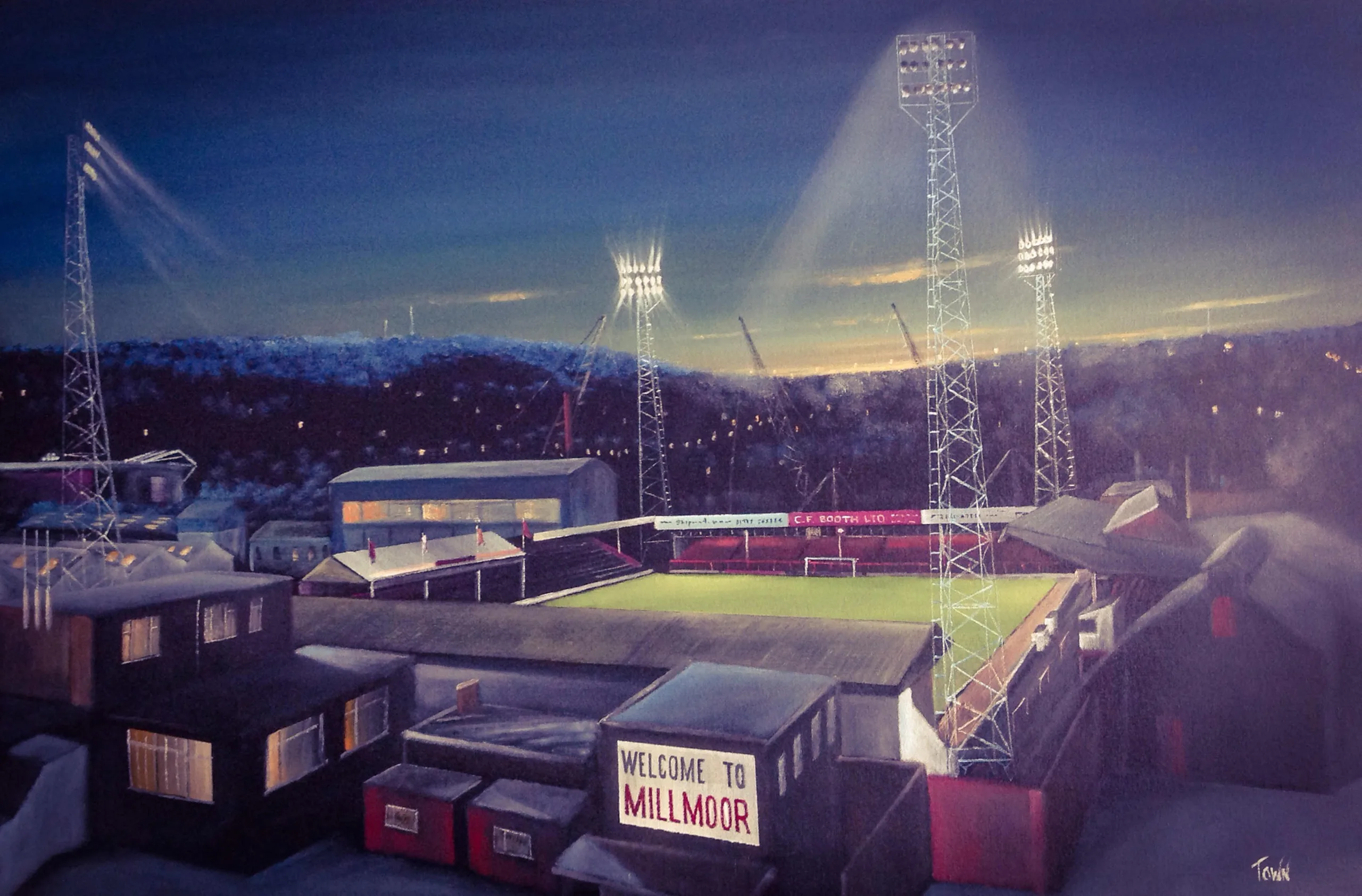
Millmoor – Rotherham United
He’s painted all twenty of Leitch’s designs, meticulously researching them and giving licence to his powerful imagination, often to capture a ‘drone’s eye view’. His eye for authentic detail may be inherited from his mother, Maggie, whom he saw as a plan drawer for British Telecom. But she was also an artist in her own right – as was her mother – and bought him his first box of acrylics, which got him started!
The fulfilment of his dream had to wait many years. However, he served an apprenticeship as a builder, developed a construction business and, with Lindsay, brought up their two daughters. “Construction work was a living,” he muses, “but I can’t say I was ever particularly happy as there was always something in the back of my mind telling me that this wasn’t the be-all and end-all of my working life.” He was in his early forties when he took up his brushes again. “Artwork had left me for years, but, somehow, I returned to it.”
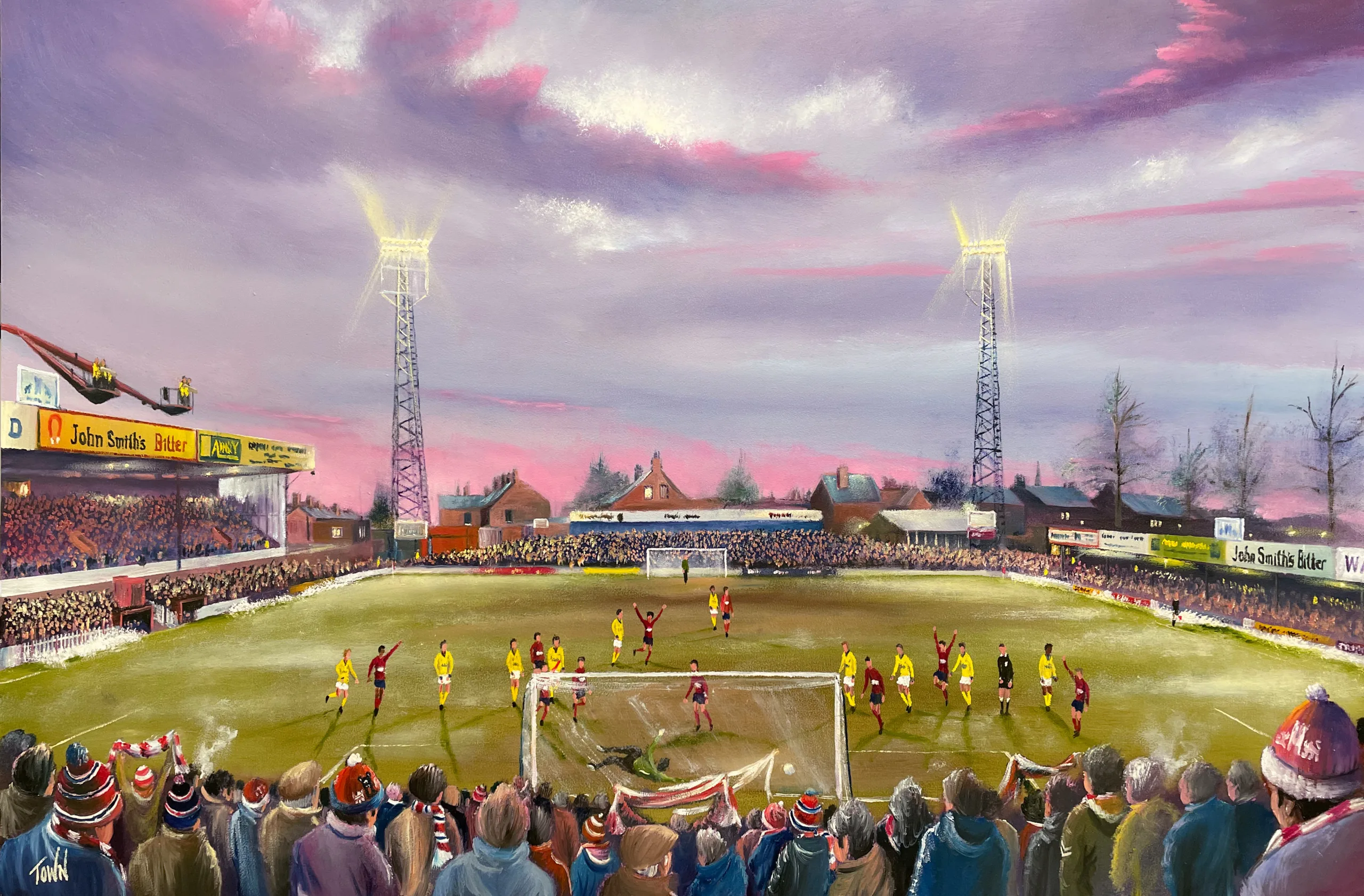
York City – Bootham Crescent
Paul has painted Bradford City’s old ground many times. His affectionate re-creation of the atmosphere of the 1982 League Cup match against Manchester United is a thing of beauty, a precious memory of a grand occasion only a few years before disaster struck.
As a 15-year-old, he survived the Valley Parade fire of 1985, which tragically claimed the lives of 56 people and injured countless more physically and emotionally. “Even though I was happy to watch the stadium rise from the ashes, I can never forget what I saw when I paint it,” he says with feeling. He thinks art might have been therapeutic because, like so many, it took years to recover from the emotional trauma. “It made me think more deeply about life and what it should be about.”
Even though I was happy to watch the stadium rise from the ashes, I can never forget what I saw when I paint it…
Naturally, his first was of Park Avenue, and the encouraging feedback from family and friends was all it took for him to start painting feverishly, almost obsessively. “It was like a drug. I couldn’t stop.” He still sounds awestruck at how he simply took up the brushes and fashioned what he saw and felt. “People sometimes liken my paintings to Lowry’s,” he considers, “but I’m just true to myself. I’ve never copied anybody. I don’t paint for critics or art dealers, and I don’t recognise art terms.” He draws breath. “I just paint!”
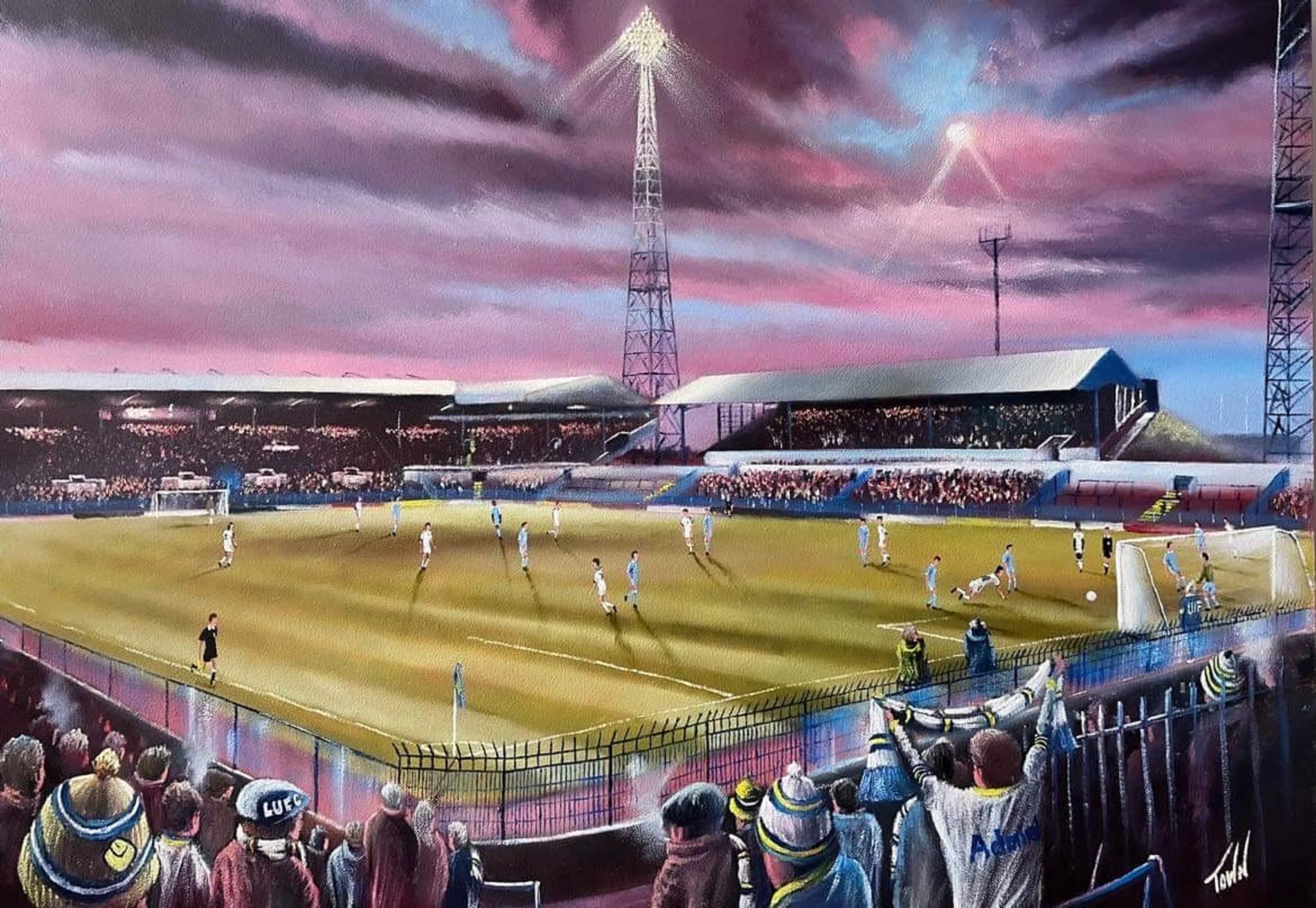
Elland Road – Leeds United
The change from artisan to artist came almost with his first sale. He was down at Wembley for the 2013 League Cup Final, where against all the odds, lowly Bradford City were playing Swansea City. One of Swansea’s supporters snapped up an affectionate portrait of their old Vetch Field ground, which Paul had taken to gauge interest.
He has to be persuaded to demonstrate some of his techniques, the way he develops the texture, with layer upon layer of thin colour. His increasingly looser, freer style of brushwork to produce the dreamy, misty effect created by the floodlights owes something to a chance meeting with artist and former Test cricketer Jack Russell. Paul ran into him at the Scarborough Cricket Festival, keen to learn from one of his heroes. “I don’t really know how I do it,” he says, with a shake of the head. “I suppose I just paint stage by stage like I used to build houses ….”
Although a former Bradford League fast bowler and a great cricket lover, Paul’s subject is mostly football and mostly of a certain vintage. “I don’t relate much to modern life,” he reflects. “I naturally gravitate to the past, to old mill chimneys and smoking gasometers that were still around when I was growing up.”
Yet, he has a romantic eye for the historically glorious, those special moments that become part of football folklore. Halifax Town’s old Shay is immortalised in its finest hour, the scene in 1980 of one of the greatest third-round cup-tie giant killings, when they beat the mighty Manchester City, memorably just a few days after Christmas.
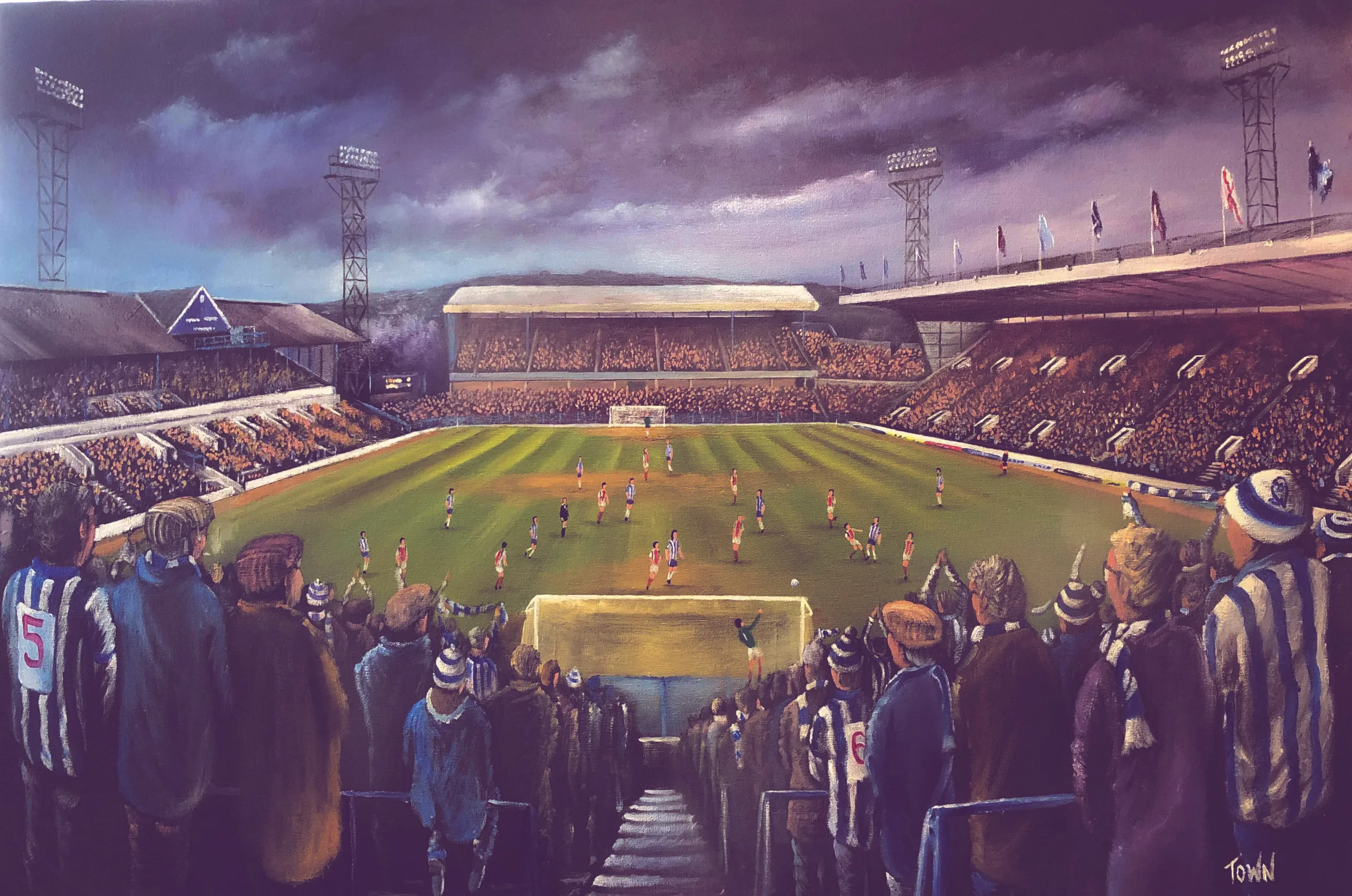
Hillsborough – Sheffield Wednesday
Sheffield’s Wednesday’s Hillsborough is a magnificent sight on the occasion of the ‘Boxing Day Massacre’ of 1979 when they beat fierce rivals Sheffield United 4-nil. Elland Road is discovered in a moment of high celebration after one more success for the great Leeds United team that Don Revie assembled, with arguably the finest British half-back line of all time: Bremner, Charlton, Hunter.
Yet, he has a romantic eye for the historically glorious, those special moments that become part of football folklore.
The commissioned portrait of a father and son watching a game in the 1960s at Middlesborough’s Ayresome Park, another Leitch’s designs, reduced to rubble in 1997, is full of simple human warmth and poignancy.
Don’t so much scroll down Paul’s paintings on his website – www.paultownart.com – as stroll through a living gallery of glorious football memories and memorabilia. Here, too, are details of the extraordinary breadth of his life and achievements, the recognition he has received in commissions and publications.
The golden age of football lives on in his canvasses.
NorthernLife Sep/Oct 23
